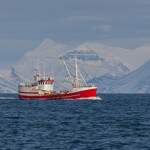GAPP awards USD 1 million to 12 companies for pollock marketing

The Association of Genuine Alaska Pollock Producers awarded USD 1 million (EUR 887,000) to 12 North American companies to market their pollock products on 10 April.
The organization also released a new strategic marketing plan for 2019-2020, which includes prioritizing consumer research.
Earlier this year, GAPP awarded USD 330,000 (EUR 292,994) to Trident Seafoods and True North Seafoods to market pollock products. New membership in GAPP has resulted in additional USD 10 million (EUR 8.9 million) in funding for the organization over the next three years.
In its second round of funding as part of its North American Partnership Program, the GAPP board approved 12 projects “that bring wild Alaska pollock to new consumers and new channels in very exciting ways over the next year,” it said in a press release. “Each partnership brings matching investment from companies across the Wild Alaska Pollock (WAP) industry – more than three times the industry’s past investment in promoting WAP through the North American Partnership Program.”
High Liner Foods, Gortons, True North Seafood, American Seafoods, and Trident are among those receiving funding. American Seafoods will expand the successful launch of its Perfect Pollock Portions to other test markets and Trident will bring its Protein Noodles made from wild Alaska pollock to club stores in the Northeast and the Bay Area of California, according to GAPP.
In addition, Portland, Oregon-based Fishpeople is utilizing GAPP funding to market its line of “responsibly-sourced, totally traceable Wildly Delicious Seafood Kits” to consumers.
Two initiatives will raise the profile of wild Alaska pollock with new consumers. Among them is an American Seafoods-sponsored culinary “Top Chef” competition that will encourage chefs and food distributors to devise recipes using pollock.
Gorton’s Seafood will also tap into the culinary world for its initiative, collaborating with a celebrity food influencer who will work to develop new Alaska pollock recipes “geared towards bringing millennials around the dinner table and using convenient ingredients – a huge driver of millennial food purchases ... in new and exciting ways,” GAPP said.
A major part of GAPP’s strategic plan in 2019 is consumer research – understanding who the wild Alaska pollock consumer is, who the target consumer is, and how they feel about wild Alaska pollock. The organization also wants to understand what types of messaging will resonate with consumers, CEO Craig Morris wrote in GAPP’s “Year 2 Strategic Plan.”
“The WAP industry for a long time has been working to market WAP in a variety of ways, yet hasn’t stepped back to examine and identify our current and potential consumers and their unique attitudes about WAP (or seafood, more generally) and what will motivate them to choose us over other protein options,” Morris wrote.
The GAPP board has given the organization “a larger investment in research than ever before” in its budget, Morris told SeafoodSource.
“Before we put those resources in a marketing campaign, we really want to learn what research is out there with Alaska pollock,” he said.
This year, GAPP plans to hire a public relations firm that will help it develop focus groups to determine which attributes of pollock “really resonate with today’s consumers,” Morris said. A consulting firm will survey all GAPP members and their “downstream partners” to gather research that is already available. GAPP's plan also calls for it to hire a communications and membership coordinator.
Finding out consumer perceptions of pollock will serve to help determine “barriers to entry for WAP so that we can address those issues head on and craft a narrative that highlights our superiority compared to other proteins with the facts to back up those claims,” Morris wrote.
“One such area we must address is around sustainability, particularly carbon footprint. As more and more customers demand data on protein’s environmental impact, it is crucial that WAP have those numbers on hand and ready to be deployed – both proactively and reactively,” he added.
By the end of the 2019, all the consumer research that GAPP gathers will be built into tool-kits that will assist any company involved in marketing pollock to consumers, according to Morris.
“Our marketing strategy is business-to-business. Its handing those who market the fish the tools they need to market wild Alaska pollock as effectively as possible,” Morris said.






Share